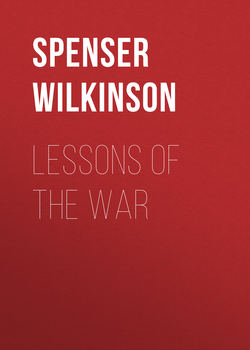Читать книгу Lessons of the War - Spenser Wilkinson - Страница 7
TWO VIEWS OR TRUE VIEWS?
ОглавлениеNovember 15th, 1899
October 11th saw the opening of hostilities, and of the first chapter of the war, the conflict between Sir George White with sixteen thousand men and General Joubert with something like double that number. The first chapter had three sections: First, the unfortunate division of Sir George White's force and the isolation of and unsuccessful attack upon his right wing; secondly, the reunion of his wings at Ladysmith; thirdly, the concentration of the Boers against the force at Ladysmith and the surrounding or investment of Sir George White. This third section is not yet ended, but the gathering of the forces at Cape Town and at Port Natal points to its conclusion and to the opening of the second chapter. The arrival of the first portion of the transport flotilla is the only important change since last week.
I thought from the beginning that the division of Sir George White's force was strategically unsound, and the position of Ladysmith a bad one because it lent itself to investment. It is now known that the division of forces and the decision to hold Ladysmith, even until it should be turned and surrounded, was due not to strategical but to what are called political considerations. The Government of Natal thought that if the troops were withdrawn from Glencoe—Dundee, or the whole force collected, say at Colenso instead of Ladysmith, the appearance of retreat would have a bad effect on the natives, the Kaffirs, and perhaps the Dutch farmers. Accordingly, out of deference to the view of the local Government, the General consented to do his work in what he knew to be the wrong way. This is a perfect specimen of the way in which wars are "muddled"—I borrow the expression from Lord Rosebery—and it deserves thinking over.
